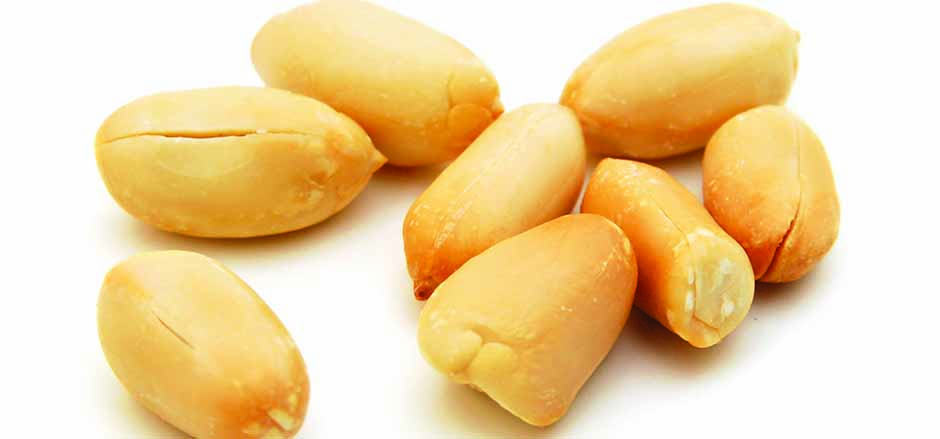Time was, you had two choices: creamy or crunchy. Whichever you chose, the ooey-gooey buttery goodness that accompanied your jelly or held your ants on their log came in one flavor—peanut—and was loaded with hydrogenated oil and tons of sugar. Today, flavor options and healthier alternatives abound. Here’s how nut butters compare.
The Nut: ALMOND
The Pros: Almond is a tree nut, so people allergic to peanuts can eat it. It’s higher in calcium, potassium, manganese and monounsaturated fat than peanut butter, with half the saturated fat.
The Cons: Almond skin can’t be removed before processing, so almond butter often has a grainy or gritty texture. Also, to impart more flavor, some brands roast the almonds in oil before processing, so read labels carefully.
Ah-Ha Use: Almonds’ mild-earthy flavor blends well with fall root vegetables. Stir it into pureed soups as a thickener and a protein boost.
Calories: 101
Calories from Fat: 79
Fat Grams: 9
Saturated Fat Grams: 1
Sodium Milligrams: 2
Fullness Factor*: 0.9
Caloric Ratio: 14/78/8 (% carb; % Fat; % Protein)
Our Pick: JUSTIN’S MAPLE ALMOND BUTTER
The Nut: CASHEW
The Pros: Cashew butter is high in copper and magnesium, good for heart and bone health. A raw cashew butter with no added sugar is a good thickener for fruit smoothies.
The Cons: Lower in healthy fats and protein than peanut and almond butter. Unlike a lot of other nuts, cashews don’t contain omega-3 fatty acids.
Ah-Ha Use: Tahini, a paste made from sesame seeds and used in Middle Eastern cuisine, isn’t a typical kitchen staple. Use cashew or any other nut butter as a substitute when making hummus or baba ghanoush.
Calories: 95
Calories from Fat: 66
Fat Grams: 8 Saturated Fat Grams: 2
Sodium Milligrams: 2
Fullness Factor*: 1.1
Caloric Ratio: 20/70/10 (% carb; % Fat; % Protein)
Our Pick: SIMPLE TRUTH SMOOTH CASHEW BUTTER
The Nut: PEANUT
The Pros: High in fiber and omega-3 fatty acids, natural raw or lightly roasted peanut butter is a safe bet. You’ll know it’s natural because the oil will separate from the paste and will have to be stirred before use.
The Cons: Because it has long been the most popular, peanut butter is also the most variable. Many brands contain partially hydrogenated oils and trans fats as well as added sugar, so read labels carefully.
Ah-Ha Use: Who knew? Peanut butter can repair scratches in your wood furniture. Apply a dab of it (smooth, not crunchy) on the scratch and let it sit for 30 minutes. Wipe it with a dry cloth, and voila!

Calories from Fat: 72
Fat Grams: 8
Saturated Fat Grams: 2
Sodium Milligrams: 3
Fullness Factor*: 1.8
Caloric Ratio: 8/72/20 (% carb; % Fat; % Protein)
Our Pick: SANTA CRUZ DARK ROASTED CREAMY PEANUT BUTTER
The Nut: SUNFLOWER SEED
The Pros: It’s a seed that tastes like a nut, so it’s one of the better flavor stand-ins for peanut butter purists. With nearly 90 percent of its fat from unsaturated fats, it’s a cholesterol- and inflammation-fighter.
The Cons: To give the mild seeds extra flavor, some brands add salt, so if you’re concerned about sodium, read the label carefully.
Ah-Ha Use: Mix 2 tablespoons sunflower seed butter with 2 teaspoons tamari and 5 tablespoons water to make a healthy salad dressing.
Calories: 93
Calories from Fat: 64
Fat Grams: 8
Saturated Fat Grams: 1
Sodium Milligrams: 0
Fullness Factor*: 1.3
Caloric Ratio: 19/69/12 (% carb; % Fat; % Protein)
Our Pick: SUNBUTTER NATURAL SUNFLOWER SPREAD
The Nut: COCONUT
The Pros: Easily the most buttery and decadent flavor of all the nut butters, it’s a super-versatile addition to sauces, dressings and baked treats.
The Cons: Beware the health halo of coconut. Although it is a popular choice for Paleo dieters, coconut butter is extremely high in saturated fat. Just two tablespoons deliver 95 percent of your RDA.
Ah-Ha Use: Add a spoonful to warm bath water or a foot soak to soften winter-weary skin. The oil is also a good hair conditioner for damaged or split ends.
Calories: 110
Calories from Fat: 90
Fat Grams: 10
Saturated Fat Grams: 9.5
Sodium Milligrams: 5
Fullness Factor*: 1.6
Caloric Ratio: 14/82/4 (% carb; % Fat; % Protein)
Our Pick: MARANATHA ALL NATURAL COCONUT BUTTER
The Nut: SOY NUT
The Pros: Because it’s not technically a nut—but rather a soybean that’s soaked in water, drained and then roasted—you can safely send this to the nut-allergy table at school or serve it to allergic guests.
The Cons: Because they are often roasted in oil, their fat content might be higher than nut butters made from raw nuts. When possible, choose a variety that says “dry roasted” on the label.
Ah-Ha Use: Spoon a small amount of soy nut butter into the bottom of an ice cream cone to stop the melty treat from dripping all over your hands.
Calories: 95
Calories from Fat: 60
Fat Grams: 7
Saturated Fat Grams: 1.25
Sodium Milligrams: 50
Fullness Factor*: n/a
Caloric Ratio: n/a (% carb; % Fat; % Protein)
Our Pick: I.M. HEALTHY CREAMY SOYNUT BUTTER
*Fullness Factor: Developed by Self Magazine’s nutritiondata.com, this 1-5 scale predicts the satiety of a food. The higher the number, the more filling it is per calorie.
Caloric Ratio: The percentage of a food’s calories that are derived from carbohydrates, fats and protein.






